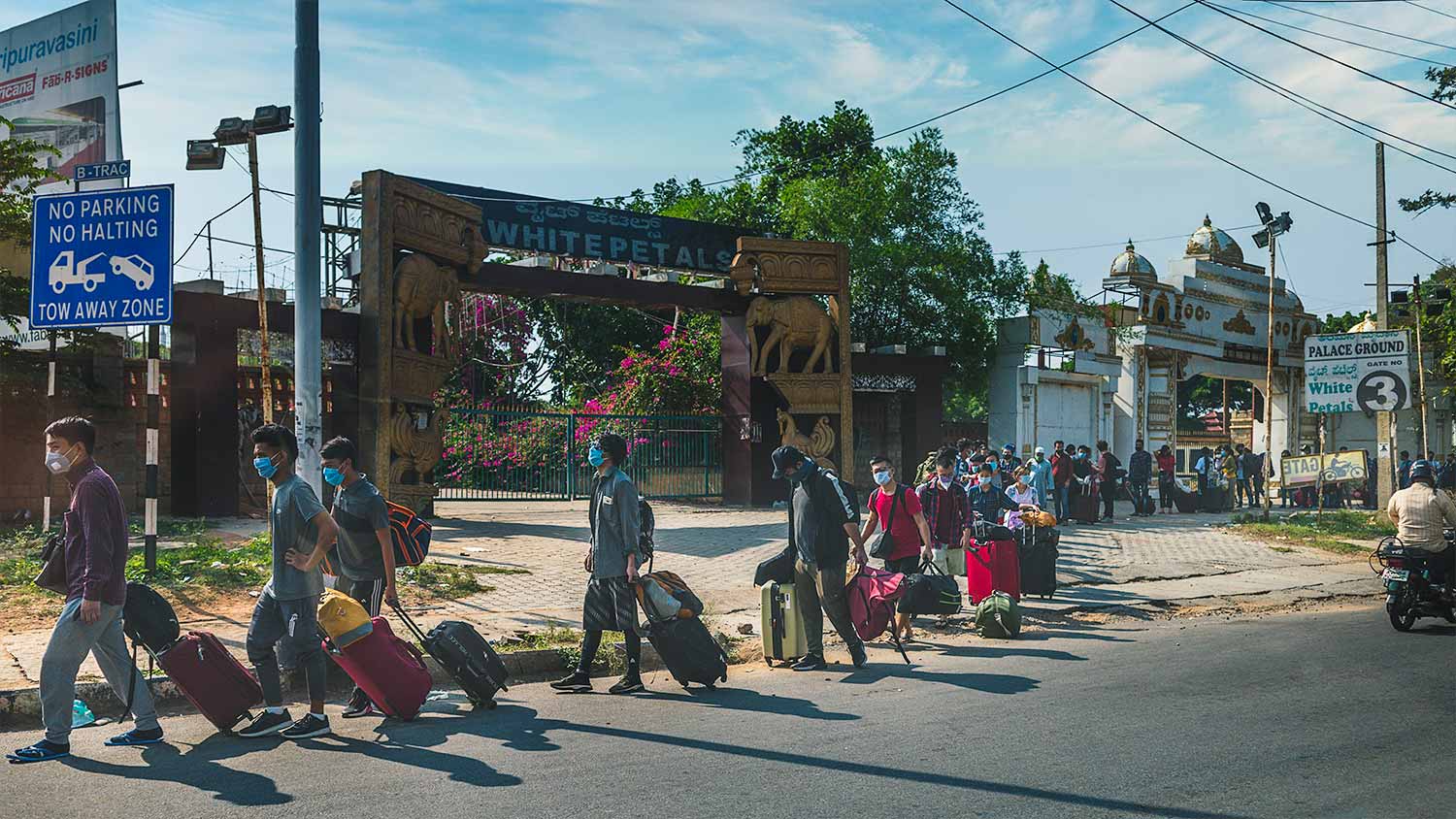Businesses Might Open, With None to Man Them
The migrants might come back to Bangalore, because one needs to make a living, but it would be interesting to see how we will regard one another in future.

The lockdown that was declared on March 23 was lifted on April 1 for select segments, defence and aerospace among them. We opened our factories on April 3. So I’ve had the good luck to drive on empty streets early April, and then I’ve been watching the steady buildup of traffic as the government allows more and more activity to resume. Having enjoyed quiet streets, I’m dreading the return of the torturous normalcy that prevailed before lockdown.
For two weeks now, what moves me every day is the daily scene along the long wall of the Bangalore Palace Grounds. Migrant labourers stand in lines there, to gain passage to their hometowns in UP, Jharkhand, Bihar, and such faraway places — which are, on average, about 2000 kilometres away.
And over the last three days, the people in these queues are different. They are Indians from the North East, well dressed, pulling roll-on suitcases, wearing masks, their hair groomed, bodies strong and healthy. The lines have gotten longer each day. They appear relaxed in the slow-moving lines, as though they’re off on just another trip, like any other past journey they’ve made home. Their recent suffering and their anxiety are not one bit apparent.
“This is sad,” I said to my wife as we passed them on our way to work Wednesday last. “Yes!” she said. We stared at the mostly young people, who were lost unto themselves. We watched for quite a while because the lines were so long. The summer sun was upon them, warming the place already in the morning. Sensing the heat outside, we reflexively pushed the air-con setting down a notch.
These North East youngsters are a part of our daily lives over the last few years. They’ve come to Bangalore for economic opportunity, leaving behind rivers and woods and mountains and meadows and all the beauty in the eastern end of the Himalayas. Here they’re waiters and captains and cooks in restaurants; they cut and style our hair; they are slick alert guards at the gates of companies we visit on business; they’re masseuses in spas that have multiplied in the city, they’re also these days nurses and staff at hospitals.
Now they’re going home, and they’ll be sorely missed.
And the North Indians whom I mentioned first? They’ve been leaving as well and in higher numbers. Those that have failed to get on the trains have started walking the distance, fearful that they might otherwise never make it home.
The absence of the North Indians will be felt in other ways, and soon enough — when we suffer stalled public works, the sights of half-done residential blocks, and incomplete office buildings. We have not known these folks at all, and, when this lockdown began, we didn’t feel and soothe their pain enough. During these growth years, we’ve been seeing them on tower tops, on bridges, on roads — we’ve been catching glimpses of them, but we’ve never engaged with them never made them a valued part of us. They’ve left, and they’re leaving, carrying the pain of alienation, and the anguish from its affirmation. When all this is over, they might come back yet, because one needs to make a living, but they and we are now keenly aware of each other, and it would be interesting to see how we will regard one another when “normalcy” resumes.
There’s anticipation that the lockdown would be eased Monday onward. More businesses would be allowed to open, but many visible and invisible drivers of the economy wouldn’t be around. How will Bangalore City appear? I’ll get to see it starting tomorrow.
